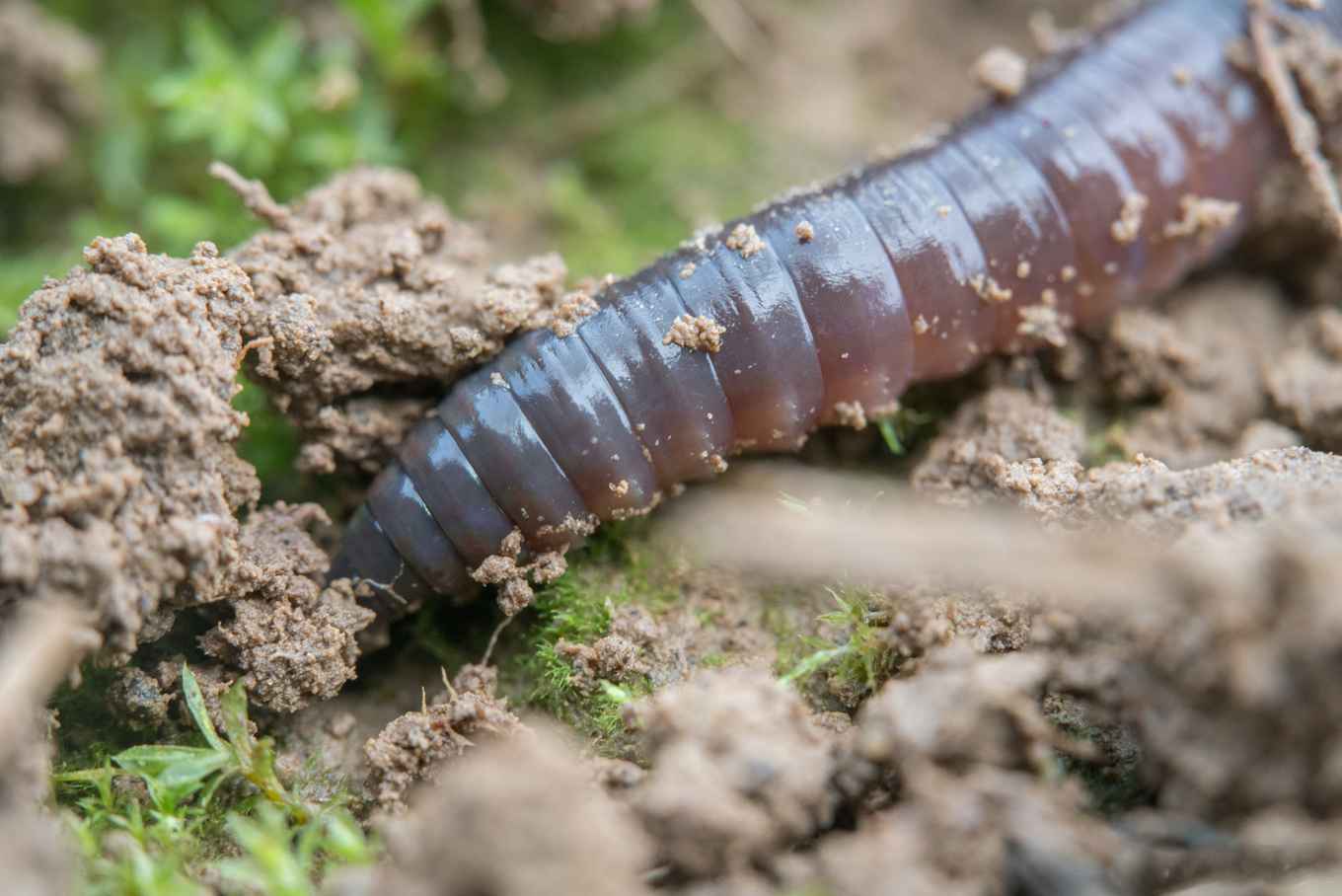Biologists plead in Science: Include the protection of soil in international biodiversity strategies
15 January 2021

If you asked people which group of animals was the most common on earth, hardly anyone would come up with the right answer. Not ants, not fish, not even humans - no, it is the nematodes, also called threadworms. Four out of five animals on earth belong to this group. The reason that hardly anyone knows them is that they live below the ground, staying invisible for most of us. Quietly and unnoticed, they perform vital services for the world above them every day - together with thousands of other soil organisms.
Most diverse
Soil is the most diverse habitat of all. Up to 1.5 kilogrammes of living organisms live beneath one square metre of healthy soil: threadworms, arthworms, springtails, mites, insect larvae, etc. In addition, there are myriads of microorganisms: Bacteria, protists, fungi, and many more. By eating living and dead animal and plant material, they transform it into nutrients – and without these nutrients, new life could not evolve. Without soil organisms, no plants could grow, no people could live.
The appeal
It is therefore even more astonishing that soils have so far hardly played a role in international strategies aimed at protecting biodiversity. According to the authors of the new Science article, this is a major problem: ‘If we do not protect soils for future generations’, they write, ‘above-ground biodiversity and food production cannot be guaranteed either’. The appeal goes to the 196 states that are negotiating a new strategy for the protection of biodiversity within the framework of the UN Convention on Biological Diversity (CBD). The group was led by the German Centre for Integrative Biodiversity Research (iDiv), the Martin Luther University Halle-Wittenberg (MLU), Leipzig University (UL) and Colorado State University and also includes professor Franciska de Vries of the University of Amsterdam’s Institute for Biodiversity and Ecosystem Dynamics (UvA-IBED).
Less and less healthy
It is about time to do so: our soils are getting less and less healthy. They suffer from intensive cultivation with heavy machinery, fertilisers and pesticides, are compacted, covered with buildings or exposed to wind and water erosion. Global warming is putting them under additional pressure. According to the Heinrich Böll Foundation, around 24 billion tonnes of fertile soil are lost worldwide every year. As a result, a wide range of services provided by soils, such as the provision of clean water or protection against plant diseases, can no longer be guaranteed. In The Netherlands, the Council for the Environment and Infrastructure recognized this decline of soil health and the necessity for action in their 2020 rapport called ‘De bodem bereikt’. In addition to all this, soils are one of the most important carbon reservoirs on earth and thus help to slow down global climate change.
Agriculture
According to the researchers, these services are given far too little attention in the political debate. ‘Up to now, soil conservation has been mostly reduced to the impacts related to soil erosion and its importance for agriculture’, said first author Dr Carlos Guerra (iDiv, MLU). ‘It's about time that soil conservation policies consider the protection of soil organisms and ecosystem functions more than just for food production and other productive systems. Soil biodiversity monitoring and conservation can support the achievement and tracking of many sustainability goals, targeting areas such as climate, food and biodiversity protection.’
Characterizing patterns
Franciska de Vries also stresses the importance of not overlooking soils. De Vries: ‘Mapping biodiversity and analysing temporal trends traditionally focused on aboveground biodiversity, but belowground biodiversity is just as important, and just as abundant! But existing protection measures and nature reserves do not take into account this below ground biodiversity at all. In our article we argue that belowground biodiversity should be included in conservation efforts. But to do this, we need to better understand how belowground biodiversity is distributed and how it develops through time and in response to threats such as land use change and climate change. While the past years have seen an exponential growth of studies assessing patterns of soil biodiversity, we need a coordinated, long-term global effort to characterise these patterns. This information can support policymakers.’
UvA’s role
The researchers therefore launched the SoilBON monitoring network, that will provide such data. De Vries’ role in this effort is contributing to coordination, sample analysis, and interpretation of the data. Specifically, the soil chemical lab of UvA-IBED will analyse soil samples from all over the world for organic C and N content - a measure that indicates how much organic matter is stored in soils. De Vries: ‘Soil organic matter accumulation in soils can offset climate change, but the worry is that as a result of land use change and climate change, soils might start to lose this organic matter and aggravate climate change. We often also see a clear link between soil organic matter content and the amount of life present in soils, so analysing these patterns on a global scale might improve our understanding of how soil biodiversity is linked to soil organic matter content.’
Warning system
According to the researchers, the proposed monitoring and indicator framework enables the efficient recording and long-term tracking of the global state of soils and its functions. They emphasise that it can also serve as an important early warning system: with its help, it can be recognised at an early stage whether ongoing measures can achieve the policy targets that have been set.
Publication details:
Carlos A. Guerra et al, (2020): Tracking, targeting, and conserving soil biodiversity - A monitoring and indicator system can inform policy, in: Science, DOI: 10.1126/science.abd7926